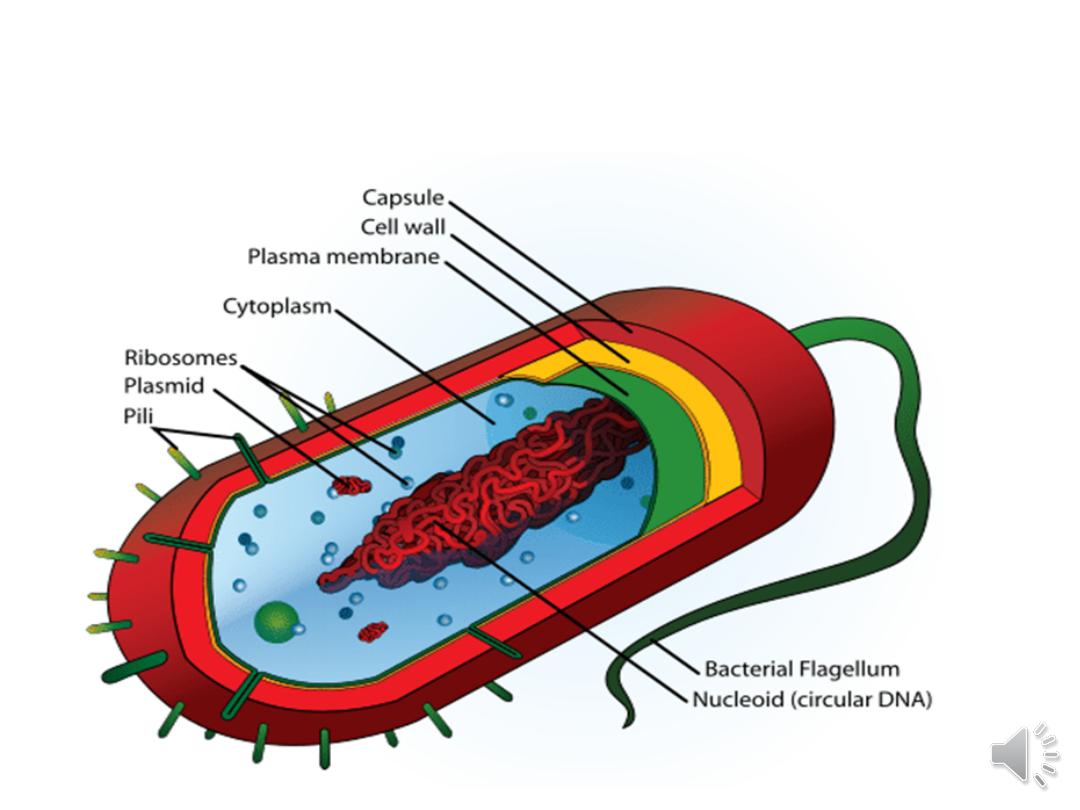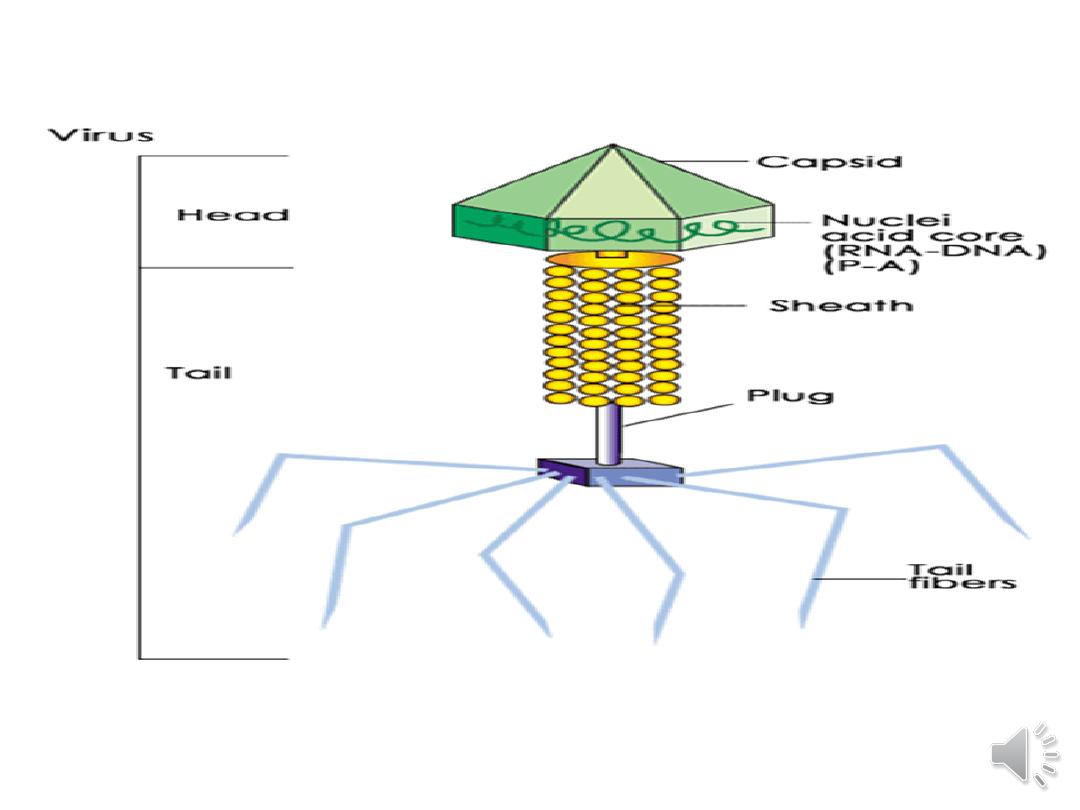
OBJECTIVES
Mcrobiology
Benefits of Microbial Activity
Introduction to bacteria
Unique Features, pathogenecity
Virus, infection ,
General Characters of Viruses.
the immune system , types of leukocyte .
Types of immunity ,Types of immune disorder
Lecture (MICROBIOLOGY)
ASSISTANT. PROF. DR . BUSHRA JABBAR
UNIVERSITY OF BABYLON
COLLEGE OF MEDICINE
DEPARTMENT OF HUMAN ANATOMY
MEDICAL BIOLOGY

Microbiology
is a broad term that encompasses the study of all
different types of microorganisms.
But in practice, microbiologists tend to specialize in one of several
subfields. For example.
bacteriology is the study of bacteria.
mycology is the study of fungi .
protozoology is the study of protozoa;
parasitology is the study of helminths and other parasite.
virology is the study of viruses.
Immunology, the study of the immune system.

Introduction to bacteria
•
Bacteria are microscopic, single-celled organisms that exist in their
millions, in every environment, both inside and outside other
organisms.Some bacteria are harmful, but most serve a useful
purpose. They support many forms of life, both plant and animal, and
they are used in industrial and medicinal processes.
Unique Features
•
Bacteria lack many of the structures that eukaryotic cells contain. For
example, they don't have a nucleus. They also lack membrane-bound
organelles, such as mitochondria or chloroplasts. The DNA of a
bacterial cell is also different from a eukaryotic cell. Bacterial DNA is
contained in one circular chromosome, located in the cytoplasm.
Eukaryotes have several linear chromosomes. Bacteria also have two
additional unique features: a cell wall and flagella. Some bacteria
also have a capsule outside the cell wall.

•
Benefits of Microbial Activity
1.Food production: These include the microbial fermentation
processes used to produce yogurt, buttermilk, cheeses, alcoholic
beverages, leavened breads.
2.Energy production and cleaning up the environment: Methane, or
natural gas, is a product of methanogenic microorganisms. Many
aquatic microbes capture light energy and store it in molecules used as
food then used by other organisms.
3.Sustaining agriculture: Through their roles in recycling nitrogen,
carbon, and sulfur, microorganism are able to convert these essential
elements into forms that can be used by plants
4.Production of useful natural gene products . from bioengineering.
Examples include specific enzymes, antibiotics, vaccines, and
medications such as human insulin, interferons, and growth hormones.

Various parts are as follows
1.Cell wall
2.Cell membrane
3.Mesosoma’s
4.Capsule
5.Flagella
6.Pila
7.Nuclear material
8.Ribosomes

The features of a bacterial cell

•
Pathogenicity = ability to cause disease
•
Virulence = degree of pathogenicity
•
pathogens must first gain access to the host:
•
must adhere and penetrate before infections established then
must continually evade host defenses
•
infection usually causes host damage
To cause disease a pathogen must:
•
1.
gain access to the host
•
2.
adhere to host tissues
•
3.
penetrate or evade host defenses
•
4.
damage the host, either:
- directly
- accumulation of microbial wastes

•
Entry Into Host
1. Portals of Entry
A. Mucous membranes (moist mucosa)
•
-most common route for most pathogens
1. respiratory tract (most common)
2. gastrointestinal tract
3. urinary/genital tracts
4. Conjunctiva
B. Skin
(keratinized cutaneous membrane)
-some pathogens infect hair follicles and sweat glands
-few can colonize surface•
unless broken, skin is usually an Impermeable barrier to microbes.

C. Parenteral route
-penetrate skin: punctures, injections, bites, cuts, surgery, etc.
-deposit organisms directly into deeper tissues
2. Numbers of Invading Microbes
-likelihood of disease increases as the number of invading pathogens
increases
•ID50 (Infectious Dose) = number of microbes required to produce
infection in 50% of the population
•-different ID50 for different pathogens
-different ID50 for different portals of entry for the same pathogen
•LD50 (Lethal Dose) amount of toxin. •
3. Adherence
•= attachment to the host by the microbe atportal of entry
•-usually necessary for virulence and blocking adhesion can prevent
disease.

VIRUS
Small living particles that can infect cells and change how the
cells function. Infection with a virus can cause a person to
develop symptoms. The disease and symptoms that are
caused depend on the type of virus and the type of cells that
are infected.

General virus structure

Infection consists of the following sequential events:
1. Adsorption:
Tail portion of the phage particle binds to receptor sites on host’s
cell wall.
2. Penetration (Infection):
Spiral protein sheath retracts and an enzyme, early muramidase,
perforates the bacterial cell wall enabling the phage nucleic acid to
pass through the hollow core into the host cell’s cytoplasm. The
empty protein shell remains attached to the cell wall and is called
the protein ghost.
3. Replication:
The phage genome subverts the synthetic machinery, which is then
used for the production of new phage components.

4. Maturation:
The new phage components are assembled and form complete, mature
virulent phage particles.
5. Release:
Late muramidase lyses the cell wall, liberating infectious phage
particles that are now capable of infecting new susceptible host cells,
thereby starting the cycle over again.

•
viruses show characters of both living and non-living.
(I) Non-living Characters of Viruses:
Following characters of viruses assign them as non-living:
(a) They can be crystallized.
(b) Outside the cell, they behave like inert chemicals.
(c) They do not show growth, development, nutrition, reproduction
etc.
(d) They can be precipitated.
(II) Living characters of viruses:
(a) They multiply within host cells.
(b) They possess genetic material, either DNA or RNA.
(c) There are definite races or strains.
(d) They exhibit mutations.

•
General Characters of Viruses
1.Viruses are non-living characters, they are not cells.
2.They do not have a cytoplasm or any kind of cellular organelles to
carry out any kind of metabolism.
3.Viruses are able to infect all living forms including plants, animals,
human beings and even micro-organism.
4.Viruses are Obligate intracellular parasites they require a living
cell or organism for its multiplication.
5.Viruses can be observed only under the electron microscope.
6.They are 10 to 100 times smaller than bacteria and its size ranges
from 20 to 300 nm so these viruses can pass easily through
bacteriological filters. They are filterable.
7.Size of viruses is measure with the help Ultrafiltration,
ultracentrifugation and electron microscopy.
8.Viruses do not have any kind of cellular organisation.

9.Viruses have spikes which help the virus to attach on the host cell.
10.It contains either DNA or RNA as a nuclear material.
11.As we know viruses are an obligate intracellular parasite and lack
the essential enzyme for protein and nucleic acid synthesis. These
viruses depend on the host cell for its replication and multiplication.
12.Viruses are unaffected by antibiotics, there are many differences
between micro-organism and viruses in spite of that viruses are
considered as micro-organism especially in the field of medical
microbiology.
13. Viruses are of great concern in the field of medical microbiology
because they are responsible for various human diseases.

14. Examples of diseases caused by viruses are Rabies, AIDS, Mumps,
Hepatitis, Influenza, Dengue, common cold and many more diseases
are caused due to viruses. Viruses are responsible for cancer in
human beings, birds and animals.
15. Viron is an extracellular infectious particle of the virus. Viron
contains essential nucleic acid which is protected by the protein coat
called as the capsid.
16.The function of the capsid is to protect nucleic acid from nucleases
and other environmental factors.
17. Capsid shows two types of symmetry that are cubical or
icosahedral symmetry and helical symmetry. Icosahedral symmetry
shows 12 vertices and 20 sides.
18. The icosahedral contains two types of capsomers Pentons at the
vertices and hexons at the Facets or sides .

19. Different viruses have different shapes, most of the animal viruses
are roughly spherical in shape as well as pox virus is brick shape, TMV is
rod shape etc.
20. Viruses may be enveloped or non – enveloped.
21. Envelop is made up of lipoproteins and is derived from host cell
membrane.
22. Viruses require a living media like the embryonic egg, cell culture or
bacterial cells.
23. There are two types of viruses that are DNA viruses and RNA
viruses.

the immune system
Our immune system is essential for our survival. Without an
immune system, our bodies would be open to attack from
bacteria, viruses, parasites, and more.
White blood cells
White blood cells are also called leukocytes .When they find a
target, they begin to multiply and send signals out to other cell
types to do the same.
There are two main types of leukocyte:
1. Phagocytes
These cells surround and absorb pathogens and break them
down, effectively eating them.

•Neutrophils
— these are the most common type of phagocyte and
tend to attack bacteria.
•Monocytes
— these are the largest type and have several roles.
•Macrophages
— these patrol for pathogens and also remove dead
and dying cells.
•Mast cells
— they have many jobs, including helping to heal
wounds and defend against pathogens.
2. Lymphocytes
Lymphocytes begin their life in bone marrow. Some stay in the
marrow and develop into B lymphocytes (B cells), others head to the
thymus and become T lymphocytes (T cells). These two cell types
have different roles:
•B lymphocytes — they produce antibodies and help alert the T
lymphocytes.
•T lymphocytes — they destroy compromised cells in the body and
help alert other leukocytes.

•
The role of B lymphocytes
Each B cell makes one specific antibody. Antibodies are part of a
large family of chemicals called immunoglobulins, which play many
roles in the immune response:
1- IgG
— marks microbes so other cells can recognize and deal with
them.
2- IgM
— is expert at killing bacteria.
3-
IgA
— congregates in fluids, such as tears and saliva, where it
protects gateways into the body.
4- IgE
— protects against parasites and is also to blame for
allergies.
5- IgD
— stays bound to B lymphocytes, helping them to start the
immune response.

The role of T lymphocytes
•
There are distinct types of T lymphocytes:
•
Helper T cells (Th cells)
— they coordinate the immune response.
Some communicate with other cells, and some stimulate B cells
to produce more antibodies.
•
Killer T cells (cytotoxic T lymphocytes
) — as the name suggests,
these T cells attack other cells. They are particularly useful for
fighting viruses.

Types of immunity
- Innate immunity
We are all born with some level of immunity to invaders. Human immune
systems, similarly to those of many animals, will attack foreign invaders
from day one. This innate immunity includes the external barriers of our
body — the first line of defense against pathogens — such as the skin
and mucous membranes of the throat and
- daptive (acquired) immunity
This protect from pathogens develops as we go through life. As we are
exposed to diseases or get vaccinated, we build up a library of
antibodies to different pathogens. This is sometimes referred to as
immunological memory because our immune system remembers
previous enemies.

Types of immune disorder fall into three categories
:
•
•
Immunodeficiencies
•
These arise when one or more parts of the immune system do not
function. Immunodeficiencies can be caused in a number of ways,
including age, obesity, and alcoholism. In developing countries,
malnutrition is a common cause. AIDS is an example of an acquired
immunodeficiency.
•
Autoimmunity
•
In autoimmune conditions, the immune system mistakenly targets
healthy cells, rather than foreign pathogens or faulty cells. In this
scenario, they cannot distinguish self from non-self.
•
Hypersensitivity
•
With hypersensitivity, the immune system overreacts in a way that
damages healthy tissue. An example is anaphylactic shock where
the body responds to an allergen so strongly that it can be life-
threatening.

